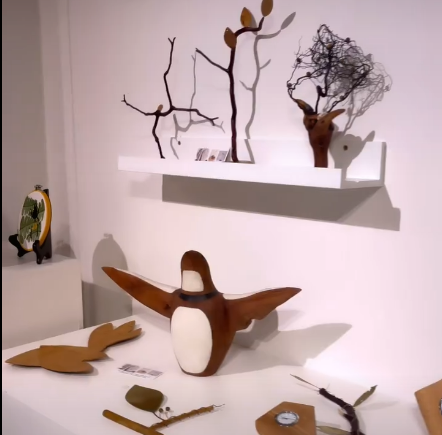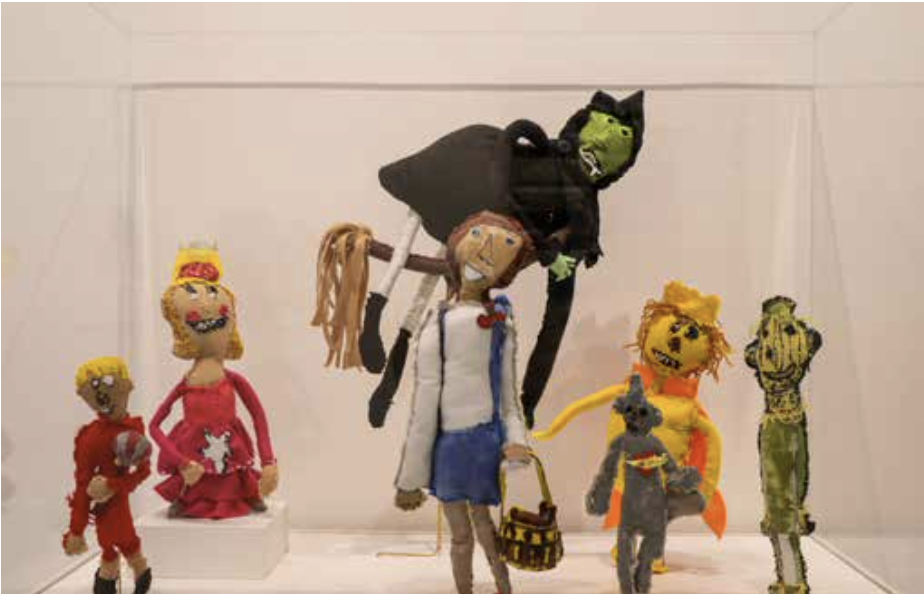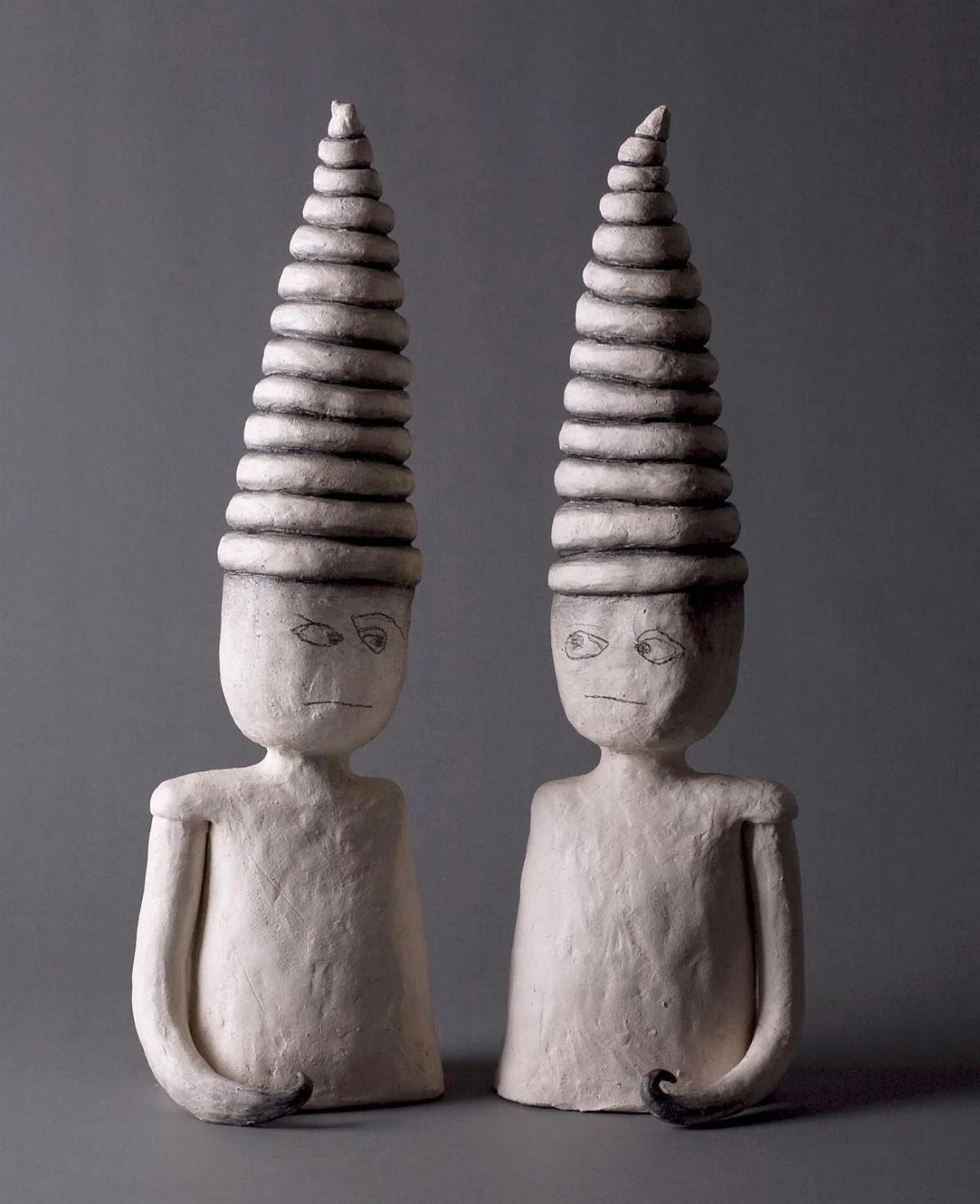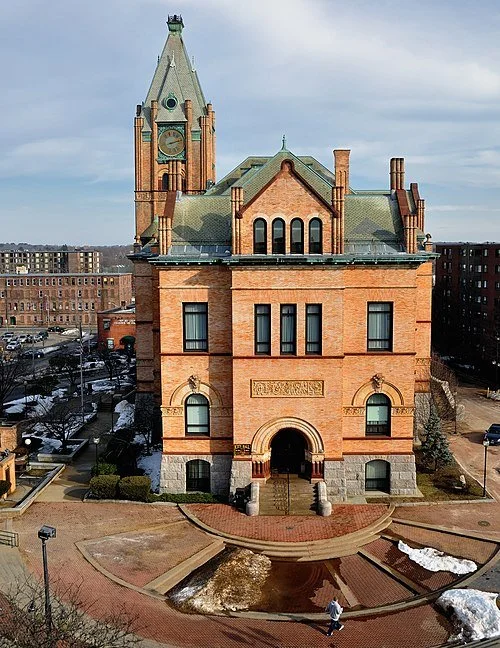
You’ll need it
Work by American conceptional artist Michael C. Thorpe, in his current show, “Homeowners’ Insurance,’’ at the Fuller Craft Museum, Brockton, Mass.
The museum says:
“‘Michael C. Thorpe: Homeowners Insurance’ presents some of his quilt-based work. The 15 forms on view illustrate Thorpe’s distinct visual language known for its geometric shapes, colorful textures, and energetic stitching. A true storyteller, Thorpe shares his world through his expressions—his friends and family, inspirational figures, daily surroundings, athletic endeavors, even painterly abstractions and meaningful texts. By depicting harmonious narratives, Thorpe aims to inspire connection between people from all walks of life.’’
Crafts for sale
Installation view of the “Holiday Handmade” shop at the Fuller Craft Museum, in Brockton, Mass., through Jan. 7
The museum says:
The shop showcases goods that “wouldn't look out of place hanging on the walls of the museum itself. This year's shop features textiles, paintings, ceramics and even cosmetics crafted with an eye for artistic flair and good design.’’
Brockton City Hall
— Photo by Timothy Valentine
‘Riotous threads’
“Wizard of Oz”, in by Janet Inman, in the show “Riotous Threads: Fiber Works from Gateway Arts,’’ at the Fuller Craft Museum, Brockton, Mass.
“Riotous Acts’’ encompasses work by artists with disabilities who work within the educational structure of Gateway Arts, in Brookline, Mass. The museum says that the show’s fiber art includes weaving, embroidery, thread collections and cloth doll making. “Embroidery dominates and colorful, thick thread and large needles help to make the designs bold and easy to understand.’’
Talking therapy in Brockton
“Conversation” (clay, graphite,), by Melissa Stern, in her show “Melissa Stern: The Talking Cure,’’ at the Fuller Art Museum, Brockton, Mass., Jan. 29-May 15.
The museum says that these witty (and sometimes unsettling) sculptures "are a spirited cast of characters formed in clay." The show takes its name from Sigmund Freud’s description of psychoanalysis, and centers on Ms. Stern’s 12 ceramic sculptures. The artist invited 12 writers to create inner monologues for each of the characters and 12 actors to perform them for audio recordings.
Brockton City Hall, which opened in 1892 during Brockton’s heyday as a center of manufacturing, especially of shoes.
Second-hand savagery
“Bird Skin” (wall-mounted discarded clothing and upholstery fabric), by Tamara Kostianovsky, in her show “Savage Legacy,’’ at the Fuller Craft Museum, Brockton, Mass., through Aug. 22
The gallery says: “The exhibition includes Kostianovsky’s signature textile ‘meat’ sculptures made with the artist’s own clothing, sculptures of birds composed of discarded upholstery fabrics, and recent forms that reference tree stumps and severed tree limbs.’’
Celebrating Snow Farm
“Raku Vessel, ‘‘ by Bob Green in the show ,“Makers and Mentors: The Art and Life of Snow Farm—The New England Craft School,” opening Nov. 28, at the Fuller Craft Museum, in Brockton, Mass., celebrates how contemporary craft has been affected by Snow Farm, the famed 50-acre craft school in the western Massachusetts town of Williamsburg, which used to be a minor factory town.
1886 print of the Haydenville section of Williamsburg by L.R Burleigh with listing of landmarks depicted.
The biggest event in Williamsburg’s history — this from Wikipedia:
“On the morning of May 16, 1874, a flood along Williamsburg's Mill River claimed 139 lives and left nearly 800 victims homeless throughout Hampshire County. The deluge occurred when the Williamsburg Reservoir Dam unexpectedly burst, sending a twenty-foot wall of water surging into the valley below. Every town and village along the river's normally placid flow was soon devastated by the great rush of water. Much of the flood's force was abated in Northampton, at the Mill River's confluence with the Connecticut River. Located over twelve miles from the breached dam in Williamsburg, Northampton was the last town to experience the flood's fury, with four additional victims swept away.’’
If it melts
“Melting Pot,’’ by Roberto Lugo, on view March 14 at the Fuller Craft Museum, Brockton, Mass.
Mr. Lugo is an American artist, ceramicist, social activist, poet and educator. The museum says “His work confronts the intertwined complexities of systemic racism, representation and history, while challenging established power structures within the art, craft and design fields.’’
See:
https://fullercraft.org/
and:
http://robertolugostudio.com/
Things that evoke COVID themes at Fuller Craft Museum
“Double Rocker, Back to Back” (cherry, maple and milk paint), by Tom Loeser, in the Fuller Craft Museum’s (Brockton, Mass.) group show “Shelter, Place, Social, Distance: Contemporary Dialogues From the Permanent Collection’’ through Nov. 22.
With the COVID-19 pandemic, the museum has pulled from its permanent collection items that speak to themes of home, community, isolation and other ideas /topics that the current crisis evokes.
Sculptural signs of the zodiac
“Rooster,’’ by wood sculptor Donna Dodson, in her show “Zodiac,’’ at the Fuller Craft Museum, Brockton, Mass., Feb. 2-May 19. (Photo by Joan Boivin). The show references the animals associated with the Chinese and Western zodiacs.
Beauty in Brockton
“Blackbird” (glass), by Natasha Harrison, at the Fuller Craft Museum, Brockton, Mass. Brockton is gritty in many places, as you might expect in an old shoe-making center, but the Fuller is in a beautiful park with a lovely pond.
Exciting sculptures
"Swarm'' (mixed media), by Stacy Latt Savage, in the show "Grounds for Play: Sculptures that excite the imagination,'' through Oct. 21, at the Fuller Craft Museum, Brockton, Mass. The museum, in a city that used to be called the "Shoe Capital of the World,'' includes a lovely small lake.
Have a ball in Brockton
Wheel vase, blue, purple, and opalescent white glaze, by Thomas Bezanson, a Benedectine monk, in his show "Brother Thomas: Seeking the Sublime,'' at the Fuller Craft Museum, Brockton, Mass. The show includes a range of his pottery, from tea bowls to vases.
Brockton in the late 19th Century and the first part of the 20th was one of the shoe-making capitals of the world. Eventually, however, most of its shoe companies closed or went south of abroad in search of cheap labor. The city has never fully recovered from this exit, although its proximity to the wealth of Boston has softened the blow. Several local cultural institutions, such as the Fuller, were founded by shoe moguls. The museum is in a surprisingly lovely park setting, whatever Brockton's gritty reputation.
One of the Brockton area's many shoe factories in 1910.
Your inner wax
''Primary Instincts'' (encaustic), by Stephanie Roberts-Camello, in the show ''SHIFTS: Approaching Encaustic From All Angles,'' at the Fuller Craft Museum, Brockton, Mass., through Nov. 26. Reception 2-5 p.m. on Saturday, Oct. 28.
Cause for celebration?
"Women's Day in Iran'' (collage encaustic), by NancySpears Whitcomb, in the group show of New England Wax members entitled "Shift: Approaching Encaustic From All Angles,'' through Nov. 26 at the Fuller Craft Museum, Brockton, Mass.
Bankers' bacchanal
"Piggy Bankers/The Great Recession of 2008'' (porcelain, wood, white gold leaf, gold leaf, bone, brass balls (!)), by Mara Superior, in the show "The Face of Politics: In/Tolerance,'' at the Fuller Art Museum, Brockton, Mass., through Aug. 21.



















